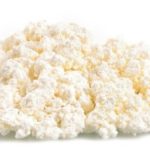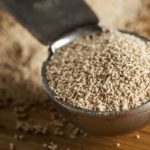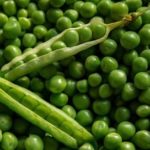16 interesting facts about sausage
 Many people like sausages, sausages and other sausages. Someone eats them every day, someone treats them with suspicion … This is understandable – looking at these products, it is difficult to guess what they really are from, and some people do not trust the information on the label. In fact, the majority of sausages made using the right technology are nothing special … In a good way.
Many people like sausages, sausages and other sausages. Someone eats them every day, someone treats them with suspicion … This is understandable – looking at these products, it is difficult to guess what they really are from, and some people do not trust the information on the label. In fact, the majority of sausages made using the right technology are nothing special … In a good way.
The most exotic sausage can be called varieties with mold. Yes, it’s about like cheese. Prepare this thing in the basement, hanging the sausage on a rope, and waiting for the moment until it begins to mold. When the fungus completely covers it and becomes dense enough, you can start a meal.
In Germany, Munich sausages are very popular. They have a white color, which is due to the high content of pork meat. Additionally, sausages include lemon zest, onions, various herbs and spices.
It is believed that the famous German butcher Johann Georg Laner invented the sausage. In 1804, he moved from Frankfurt, where he studied the craft of the butcher, to Vienna, and opened a shop there. A year later, Laner presented to his customers an invention – a sausage, which we know as Vienna.
Doctoral sausage once really tried to be treated, more precisely, to restore the undermined forces of the body. The product appeared in the heyday of the Stalin era, the 30s of the XX century, and was intended for very specific consumers: the heroes of the Civil War, who gave their health for the power of the Soviets, and the martyrs of the tsarist regime. The name of the inventor of the doctor’s sausage is unknown. But the legend remained that he wanted to give her the name “Stalin”, but was afraid.
The most popular sausage in the whole world is boiled. The secret to this success is simple: it is the least caloric, and then it is considered a dietary product.
The world record in the nomination “the longest sausage ever made” belongs to the sausage 59.14 km long. If a pedestrian walks at a normal speed, then it will take him 20 hours to get from the beginning of the sausage to its end.
Sausage was prepared in ancient China as far back as the 6th century BC. The Chinese served fried sausages made of lamb and veal, and this dish has survived to this day. True, in a slightly modified form.
Now hot dogs are popular almost all over the world, although they appeared relatively recently, in the 20th century. And initially they began to put a hot sausage in a bun just so as not to burn their fingers on it.
The smallest sausages are Nuremberg. Their size usually does not exceed the size of the little finger, so at least a dozen of them are in one serving.
The largest sausage monument in the world can be seen in Canada, in the city of Mandeir. Interestingly, they built it at the expense of Russian and Ukrainian immigrants.
In ordinary cooked sausage, meat is usually about 30-40%, and this is at best. Although the classic recipe is 95% meat, the rest is eggs, milk and spices.
In the village of Ramsbottom, located under the town of Bury, there is a pub with the very interesting name “Royal Oak”. From year to year lovers of a rather exotic sport gather here – throwing black pudding. Moreover, the “athletes” come here from almost all over the world! The main task of the participants in the annual tournament is to knock down the Yorkshire pudding with the Lancashire bloodsucker, which is installed on a wooden platform at a height of six meters. Each applicant for champion status is given only three attempts.
A world record for eating sausages was set back in 1986 in Burntwood, Great Britain. At that time, one of the contestants was able to eat as many as 30 sausages per minute.
In the cheapest sausage, the meat content may be slightly above zero. Its most popular substitute is soy, or rather, soy powder. And for the “sausage” taste, flavors and other additives are responsible.
Cooked sausage cooked using traditional technology usually has a pale and not very attractive color. But in the beautiful pink and red sausages sold in the store, this color is due to the presence of dyes in their composition.
The word “sausage” in our time does not necessarily mean something meat. There are vegetarian sausages, and even sweet ones, which are used as a dessert.



























